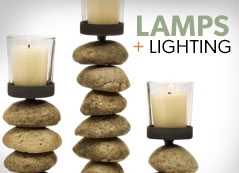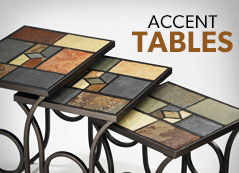
Modular Office Furniture, Cubicles
Modular desking and cubicles are great for the growing process of your business. As your business grows and changes, office furniture systems are there for the change. Modular office furniture are open office environment systems, usually built to last, and they are usually easy to configure and re-configure.
The term cubicle comes from the Latin word "cubiculum" which means bed chamber. It was used in English as early as the 15th century. It eventually came to be used for small chambers of all sorts, and for small rooms or study spaces with partitions which do not reach to the ceiling. A cubicle seeks to give a degree of privacy to the user while taking up minimal space in a large or medium sized room. Like the modular desk of the mid-20th century, it is composed of modular elements that can be arranged in various ways with standard hardware or custom fasteners, depending on the design. Installation is generally performed by professionals, although some cubicles allow configuration changes to be performed by users without specific training. Cubicles are highly configurable, allowing for a variety of elements such as work surfaces, overhead bins, drawers, and the like to be installed, depending on the individual user's needs. Some sources say that the introduction of the cubicle desk to the computer chip manufacturer Intel Inc. during the 1960s. Its creation is generally attributed to Robert Propst, a designer from Colorado who worked for Herman Miller Inc., a major manufacturer of office furniture. It was based on a 1965 prototype and named the Action Office, made up of modular units with an open plan, an entirely novel system for the time. An office filled with cubicles is sometimes called a cube farm. Although humorous, the phrase usually has negative connotations. Cube farms are often found in high-tech companies, but they also crop up in the insurance industry and other service-related fields. Many cube farms were built during the dotcom boom.
Today, Office cubicles are usually called "systems furniture" by dealers. The best aspect of them are that they solve some common business problems in that they offer a great way to divide large, noisy office spaces into private work areas without building permanent walls. Because of its flexibility and modularity, you can mix and match a wide range of modular layouts and add extra pieces to provide all your employees with the workspace they need. With modular desking and cubicles there are so many options available to choose from! When choosing modular desking and cubicles you will need to design a system appropriate for your space, business, and employees. If you're furnishing an entire office, it would be a good idea to consider your systems furniture purchase separately from desks, conference tables, etc. Those other pieces can be purchased piece by piece from different vendors, but you should definitely buy all your cubicles and accessories from the same source to keep your office showing a unified professional look! This is because while many brands may look similar, they use usually use completely different hardware and panels and are almost never interchangeable so just a word of caution on that.
Most modular desking and cubicles systems today are available in two main designs: panel-mounted and freestanding. Most modular desking and cubicles systems furniture today are panel-mounted with the wall panels and components such as desks and file cabinets are mounted directly onto the panels. Freestanding components use separate panels that are placed around furniture. Each of these designs has its own advantage. Panel-based systems will offer you greater design flexibility and can be equipped with internal power options. Panel-based systems can be a bit taller to provide greater privacy and noise reduction. Now with the freestanding system the main advantage is that they can be easily installed and reconfigured. This makes them more convenient for firms or companies that will often rearrange or move office space.
When choosing modular furniture you should look into the flexibility that a given system offers. If you move your office to another location two years down the road, it would be nice, convenient, and cost effective to have systems that can be reconfigurable to fit all different type of space! Also inside your office you are probably going to want to arrange some cubes in traditional rows, while other co-workers for example, might share a larger enclosed space or you could have staggered or diagonal layouts! With modular desking and cubicles, there is much to choose from!
Also it is good to check the system's durability. Modular furniture is designed to last many years - the warranties included in your purchase can provide a good indication of the expected life span. Because you'll be using it for years, you should also make sure the dealer you choose is committed to carrying this line for a long time to ensure the availability and of parts and service down the road.
In general, the most common cubicle sizes familiar to office workers across the country are 6' x 6', 6' x 8', and 8' x 8'. These cubicles provide enough room for a computer or two, desk space for your paperwork, and perhaps a single chair for visitors, etc. A cubicle can be as small as a 2' x 4' and these are called center workstations. Sometimes a cubicle can be as large as a 12' x 12'! These are usually called manager's cube and they includes space for several people to meet. Also, in addition to the size, you'll need to decide on a height for the walls you are going to purchase. Heights usually range from 34" to 85". The choice of height usually depends quite a bit on how your employees like to work. For instance, many people like being able to stand up and talk to other co-workers. At the same time, they want to have privacy when they're seated. In general, the 54" walls are a good height for that type of interaction. The much bigger 67" or 72" walls created for more privacy but the drawback with this kind of wall is that it most often reduces light which can make collaboration more difficult. Lastly, 42" walls make it easier for employees to work together but provide little privacy or help in reducing distractions.
When you are buying your office workstations it isn't like buying furniture at an office supply store. For one thing, cubicles from leading manufacturers are built to last for decades. Most dealers will work with you the buyer to design a system that's right for your needs and will stand behind their work in warranties, etc.
When you are getting ready to purchase your modular desking and cubicles, you'll first need to prepare some basic information about your office and your employees. Knowing the floor plan of the space you're looking to furnish is key. If you can get a scale drawing of your office that will help a lot, but if not, what you should do is measure the office yourself to get a rough idea of your available space for workstations. Knowing the general dimensions of your office will greatly help in this process. After you get the dimensions down the next thing that you want to do is consider your employees. You will need to know how many employees need office workstations, etc. It would be wise to talk to your employees about their needs and consider things like; do they spend more time on the computer, on the phone, or doing paperwork? You might want to think about things like, is it important that they be able to easily converse with other co-workers? You might want to think about if they have small meetings in their cubes, etc. These kinds of factors will influence the size, wall height, and surfaces of the workstations you choose from when making your purchase! Lastly, don't forget other things you will have in the office like copiers, printers, and any other shared resources that need to be accessible for your workers and how those items should be positioned in your office set up.
Another thing to consider is electric power and data network connections that can run through a row of cubes. There are two main electrical systems for the office. One is called the "base feed" where power comes from a wall outlet. The other is the "top feed", where wires are dropped down from the ceiling. A cost effective word of advice for you here, if you have cubes are next to walls or existing overhead power sources, you may be able to save some money by simply adding wall outlets or "utility poles" that are non-structural columns that conceal wiring instead of having to pay for each cube to have its own power source, etc.
In each cubicle, you will want to fill it with the best cubicle furniture that fits your needs and budget! These items include filing drawers, wall shelving or cabinets, and free-standing bookshelves, many of which have the option to include locks. Other common additions in the cubicle include whiteboards, windows, built-in task lighting, coat hangers, and tack boards.
Modular desking and cubicles are great for the growing process of your business! As your business grows and changes, office furniture systems are there for the change! With so many options to choose from, we hope our advice will give you knowledge and help you pick the perfect system for your office!




























